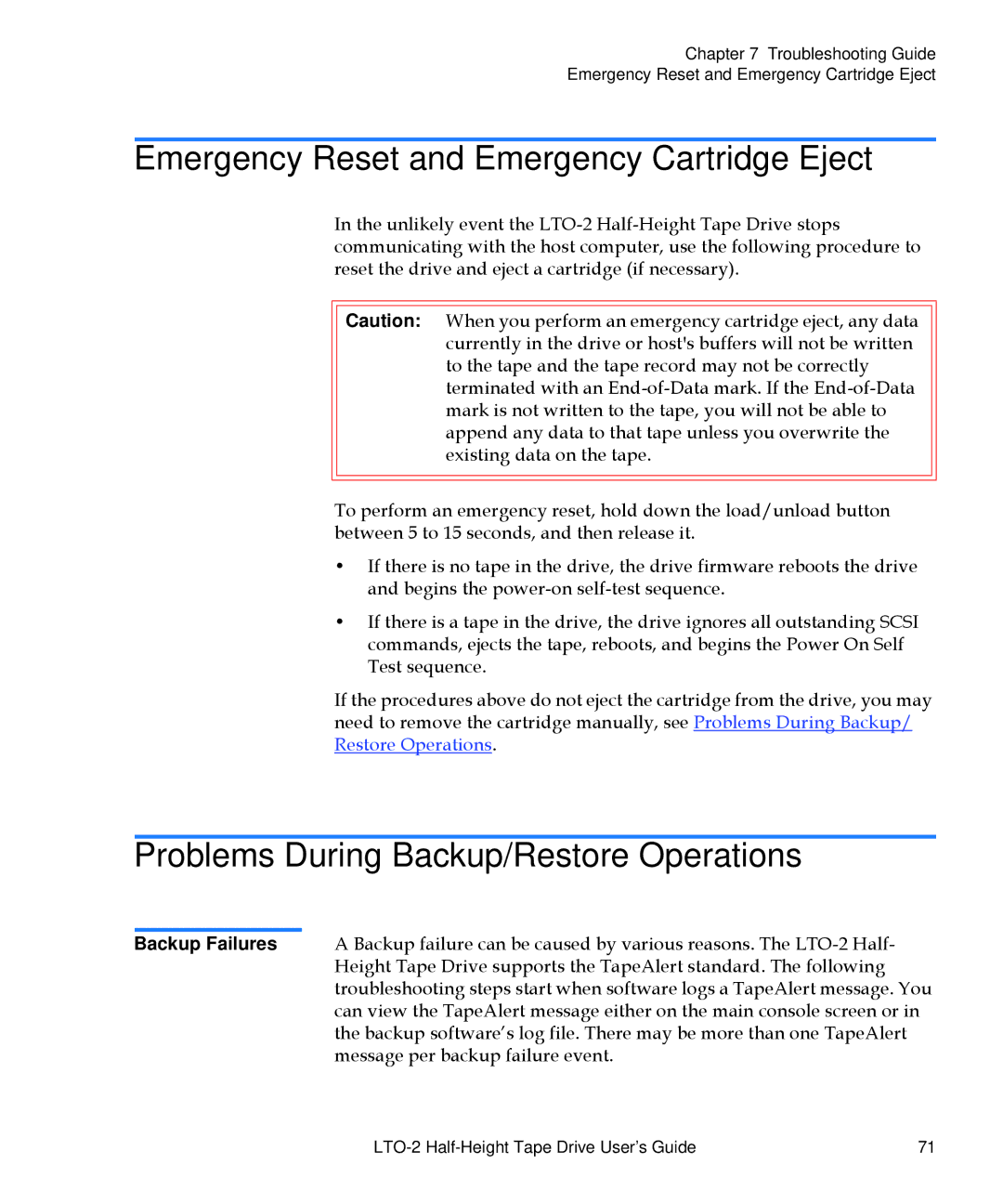
Chapter 7 Troubleshooting Guide
Emergency Reset and Emergency Cartridge Eject
Emergency Reset and Emergency Cartridge Eject
In the unlikely event the
Caution: When you perform an emergency cartridge eject, any data currently in the drive or host's buffers will not be written to the tape and the tape record may not be correctly terminated with an
To perform an emergency reset, hold down the load/unload button between 5 to 15 seconds, and then release it.
•If there is no tape in the drive, the drive firmware reboots the drive and begins the
•If there is a tape in the drive, the drive ignores all outstanding SCSI commands, ejects the tape, reboots, and begins the Power On Self Test sequence.
If the procedures above do not eject the cartridge from the drive, you may need to remove the cartridge manually, see Problems During Backup/ Restore Operations.
Problems During Backup/Restore Operations
Backup Failures A Backup failure can be caused by various reasons. The
71 |
